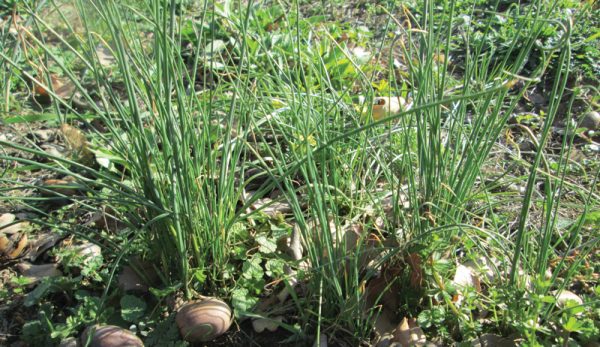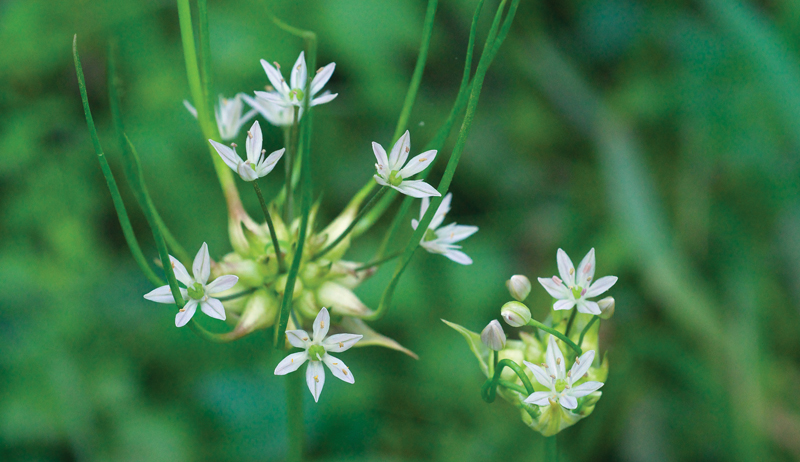
We called this plant “onion grass” as kids. One can smell it while trimming the lawn at the end of mowing season.
We didn’t know we could eat it back then.
Field garlic (Allium vineale), wild onion (Allium canadense) and a few other less common species aren’t actually grasses but are bulbs in the vast family of Alliums. These include leeks, chives, ramps, onions and garlic.
It may help to start off by saying that any plant with vertical leaves that smell like onion or garlic is in the Allium family and will be safe to eat, making this a great plant for novice foragers to learn.
Finders, Keepers
You can find them growing in lawns or on the edge of woods under deciduous trees. They send their leaves up in the cool weather of fall, grow through the winter, flower in spring and go dormant by summer to avoid dry weather and competition from tree roots.
The leaves can be harvested any time they are visible. The bulbs can be harvested year-round with a trowel or shovel.
The flowers are edible, too.
The leaves may be 8 inches to 2 feet tall, depending on the species. The wild onions will have round, hollow leaves like chives. The field garlics will have flattish, hollow leaves, similar to garlic but much smaller. Fortunately, field garlic is in season when cultivated fresh garlic is unavailable.
Read more: Why start foraging? It provides a link to ancient ancestors, for starters.
A Tasty Treat
You can use the leaves and bulbs any way you would use cultivated onions or garlic. The flavors, however, taste stronger. Be judicious and try some yourself before sharing with others so you don’t overdo the flavor.
Leaves tender enough to be snipped off with your thumbnail can be chopped and sprinkled on a dish, as you would use chives. The sturdier base of the leaves can be cleaned and added to stock for flavor.
Snip the roots from the bulbs, remove the skin, wash well and chop or mash in a garlic press to use in a stir-fry.
Foraging for Foragers
Euell Gibbon’s loving mother insisted he leave home during the Great Depression because she only had enough money to feed his younger siblings. He was 16 years old.
Gibbon joined the hobos on the freight trains headed for California, and they taught him the wild foods they knew. Along with what he had learned from his mother and grandmother while growing up in east Texas, Gibbon became accomplished at living off the land.
Thirty years later, in 1962, he wrote his first book: Stalking the Wild Asparagus. He followed up that success with Stalking the Blue-eyed Scallop, Stalking the Healthful Herbs, The Beachcomber’s Handbook, Feast on a Diabetic Diet and Stalking the Good Life.
Euell Gibbon’s books are no longer in print, but they all can be foraged at used bookstores. That makes them excellent holiday gifts.
AbeBooks.com is a clearing house for all the mom-and-pop bookstores in the English-speaking world, and you can certainly find Gibbon’s books there if your local used bookshop doesn’t carry them. You can also find some e-versions online at Google Books.
Gibbon’s books aren’t just valuable for their detailed information but also for his delicious writing. It’s like receiving a letter from a knowledgeable, dear friend.
I only have three of his books, so I’ll keep stalking them till I find them all.




